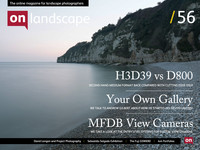Book Review

Peter Cook
Surrey Photographer who's had a life long love affair with the British landscape, mountains and water.
 Photographically Speaking is a book by the Canadian based photographer David duChemin, to get some of the practical info out of the way first: It's 272 pages long and is available in paperback or Kindle format and published by New Riders ISBN-10: 0321750446
Photographically Speaking is a book by the Canadian based photographer David duChemin, to get some of the practical info out of the way first: It's 272 pages long and is available in paperback or Kindle format and published by New Riders ISBN-10: 0321750446
This is the fourth book of a trilogy, yes I know thats odd but David does explain how he gets away with calling four books a trilogy in his introduction, and his aim with this book is to introduce some key concepts in the language of understanding a photograph and in doing so hopefully making your own photographs better. He does this without, as he puts it, being ‘academic’ and using ‘hundred dollar words’.
The book is split into two main sections, the first section is taken up with two parts, in these David explains how this language of photography works with the first part covering your Intent as a photographer and second part covering the Visual Language. The second section contains 20 photographs which he uses as practical examples of all that has gone before, he accompanies each photograph with several pages of text in which he explains his thinking behind making the image.
So how does he get on with this potentially tricky subject, well in my view he certainly succeeds in keeping it all accessible and understandable. I have always found this subject matter difficult to get to grips with as I have felt that I shot intuitively and should not get bogged down thinking about lots of stuff before making an image. And when viewing others images I did not need to ‘understand’ a photograph but was happy enough to simply like it or not, these two very thoughts David tackles in the first part of the book. He also discusses the part the Frame plays in the photograph, how it creates a limited view of the world and how we can use that to suggest things to the viewer by way of making decisions about what we leave in, and out, of our frame. He also discusses the flattening effect of a photograph and how we can use layers to overcome that flattening effect if we so wish. Its all about the photographer making careful, thoughtful decisions to achieve your intent for that image.
In the second part he tackles the Visual Language of a photograph, he does this by discussing the elements of a photograph - lines, shapes, curves, contrast and light - and then the decisions you make such as the crop, orientation, aspect ratio, optics and exposure. In this part David adds in plenty of creative exercises to help make the point and to help you understand what he is trying to get across. Again its all done in his own lighter, easy going way that makes it easy to digest and learn.
In the second section of the book he presents 20 of his own photographs and urges you to study each image and then write down your own thoughts on it, asking yourself why you like or dislike it. Then read his own description and thoughts, if you wildly differ, do not assume he is right and you are wrong, just try to ask why you are seeing what you're seeing. The important thing in this section is become conscious of how you read images, this should help you make better photographs that say more.
So has reading all this changed my outlook on all this, well yes I think (and hope) that it has. I confess I have not yet ‘done’ all of the 20 photographs in the second section but will carry on and finish soon, and then read it all again - its that sort of book.
You can get the book from David DuChemin's website or other major book stores.














